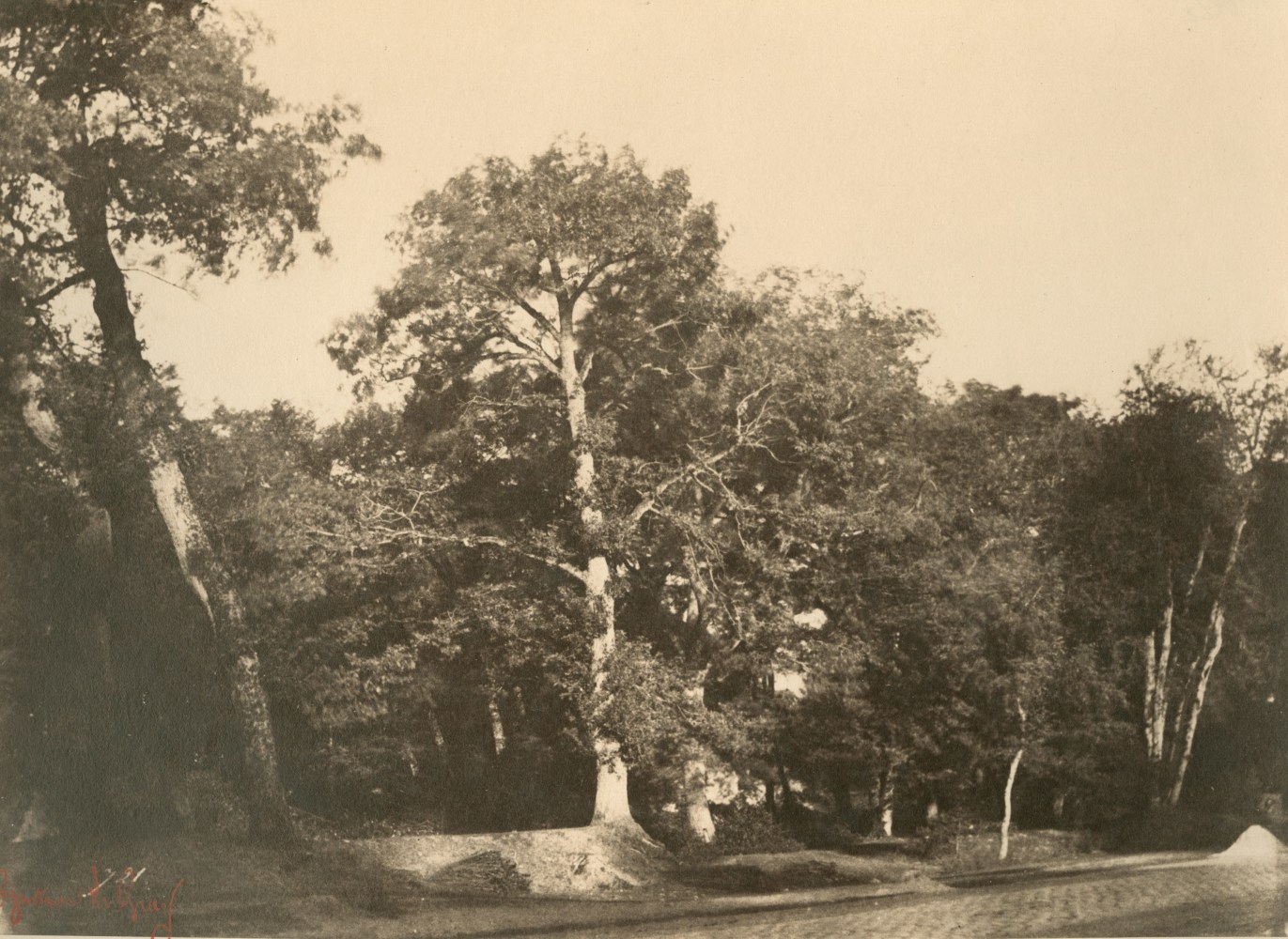
Gustave Le Gray (French, 1820-1884)
"Le Hêtre, Fontainebleau,"early 1850s
Albumen or coated salt print from a waxed paper negative
20.0 x 27.2 cm
By the late 1840s Le Gray had become an innovator of photographic processes, developing the waxed paper negative around 1848. Saturating the paper with beeswax and light-sensitive chemicals produced an image sharper than that resulting from the paper negative process devised by Talbot in the 1830s. The waxed paper of Le Gray’s process could be prepared in advance and developed days after exposure allowing photographers to minimize the quantity of equipment in the field.
In 1849, Le Gray traveled to Fontainebleau to photograph the forest. By that time, the forest of Fontainebleau had already hosted several important landscape painters, such as Camille Corot and Theodore Rousseau, who produced oil sketches en plein air. Train service from Paris, established in 1849, also brought thousands of metropolitan visitors who strolled through the various regions of the forest which included rugged landscapes of boulders and sand, thick oak forests, and shaded birch groves. Le Gray sought out the most technically challenging subjects for his photographs, concentrating on rocks and trees bathed in rapidly shifting light that was difficult to capture with long exposures. Masterpieces of light and shadow, Le Gray's pictures of Fontainebleau are remarkable technical achievements and are considered some of the most artistic photographs made in the mid-nineteenth century.
Inquire
Henri Le Secq (French, 1818-1882)
Le chêne dénudé, 1870s, paper negative, 1850s
Photolithograph
51.2 X 37.8 cm
It is likely that this example was printed using the "encre grasse" method of Thiel Ainé et Cie, a firm that developed a photolithographic technique and collaborated several times with Le Secq, each time using his old paper negatives from the early 1850s. Most known Le Secq photolithographs are of architecture. There are very few of Fontainebleau. This print is one of the only examples to have appeared on the market.
Inquire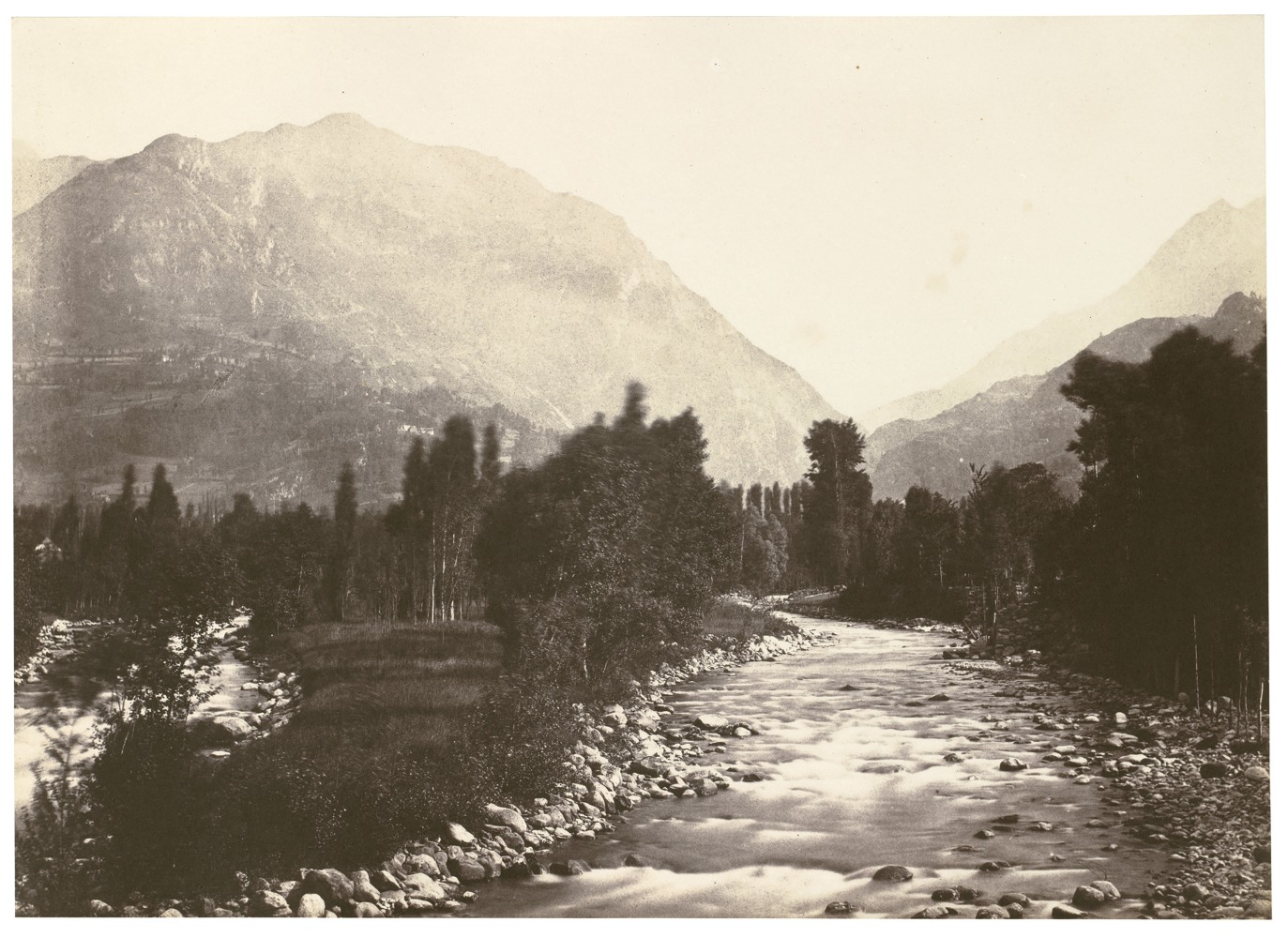
Joseph vicomte Vigier (French, 1821-1894)
"Saint-Sauveur. La Vallée de Luz prise du chemin de Sasis," 1853
Salt print from a paper negative
26.0 x 36.7 cm
Vicomte Vigier was one of Le Gray's most successful pupils. His comfortable mastery of Talbot's calotype as well as Le Gray's wax paper negative process gave him great flexibility. Using these two techniques and an exceptionally large camera, Vigier led armchair travelers on an 1853 summer journey through the Pyrenees. Most of his views, such as this one, rely on a deceptively straightforward depiction to create a magnificent view.
Inquire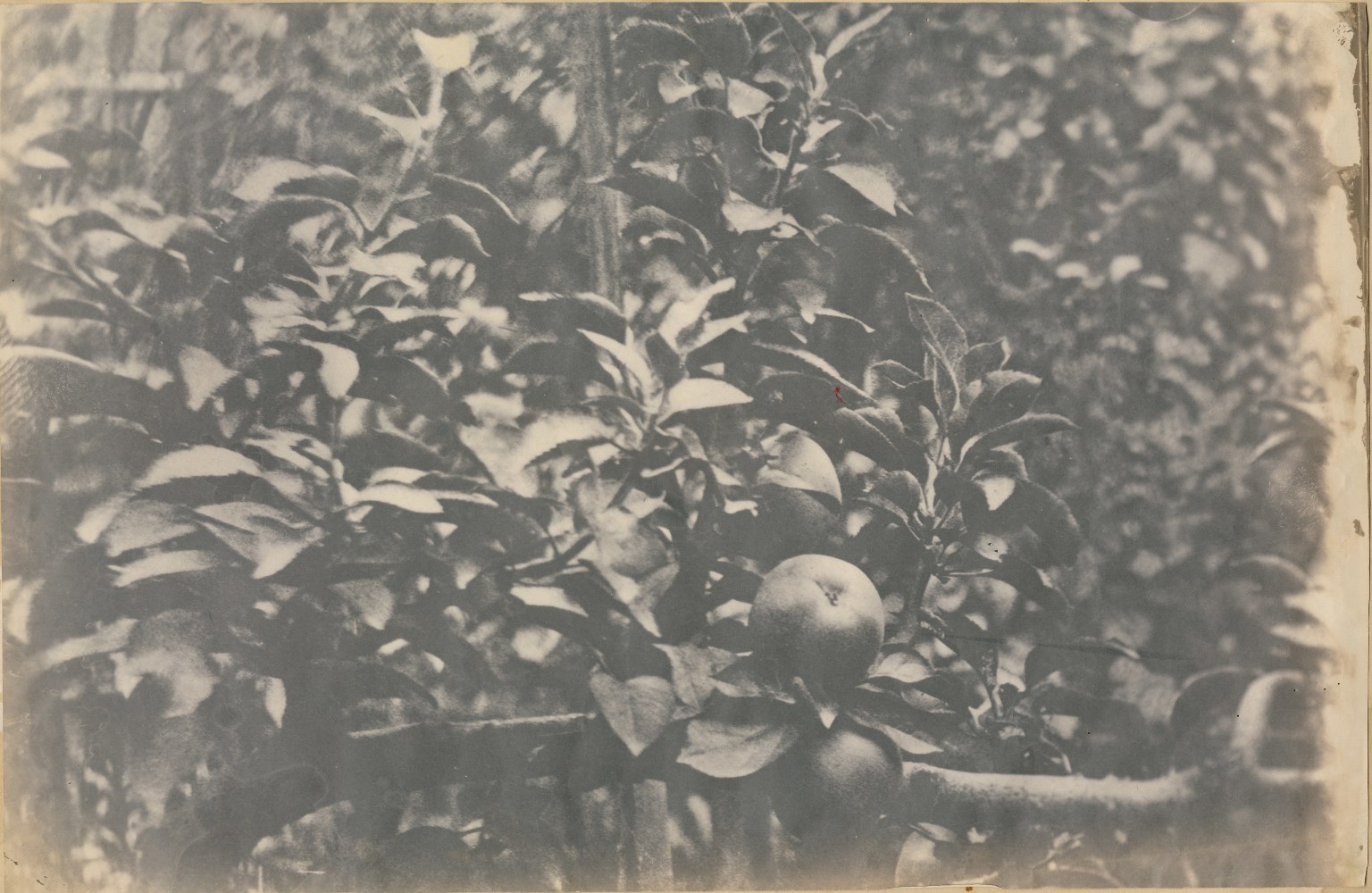
Unidentified photographer attributed to the Circle of Charles Simart
Detail of an espaliered apple tree (left), from the album assembled circa 1856-1860
Salt print from an enlarged collodion negative
28.4 x 43.4 cm
Inquire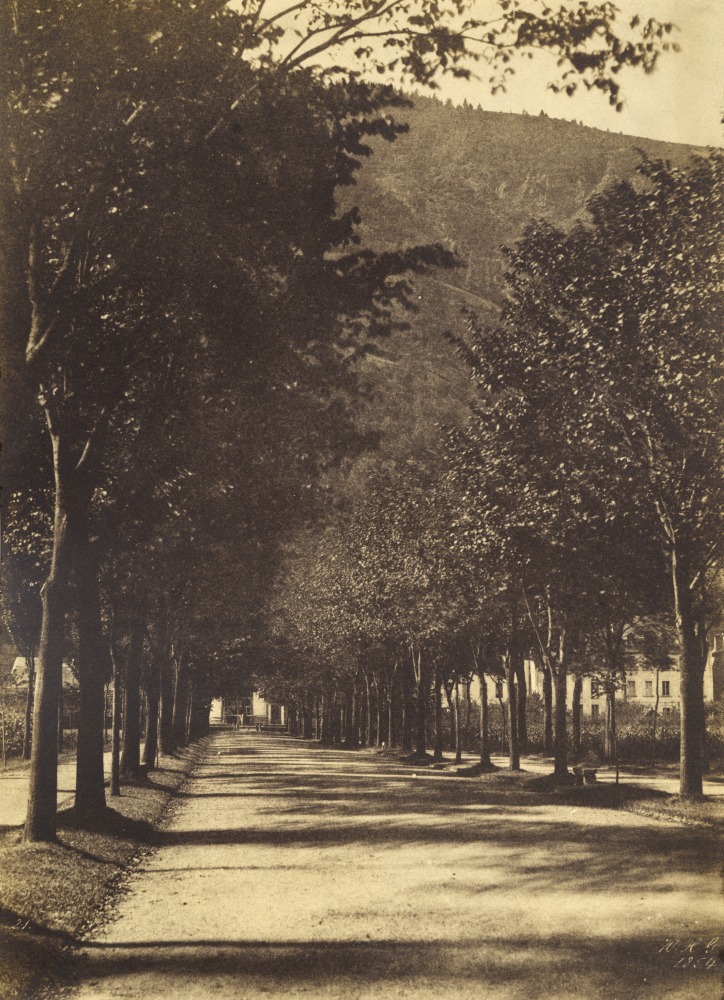
W. H. GUEBHARD (American, active 19th century)
Alley of trees, probably in Pau, 1854
Salt print from a paper negative
34.9 x 25.0 cm
Inquire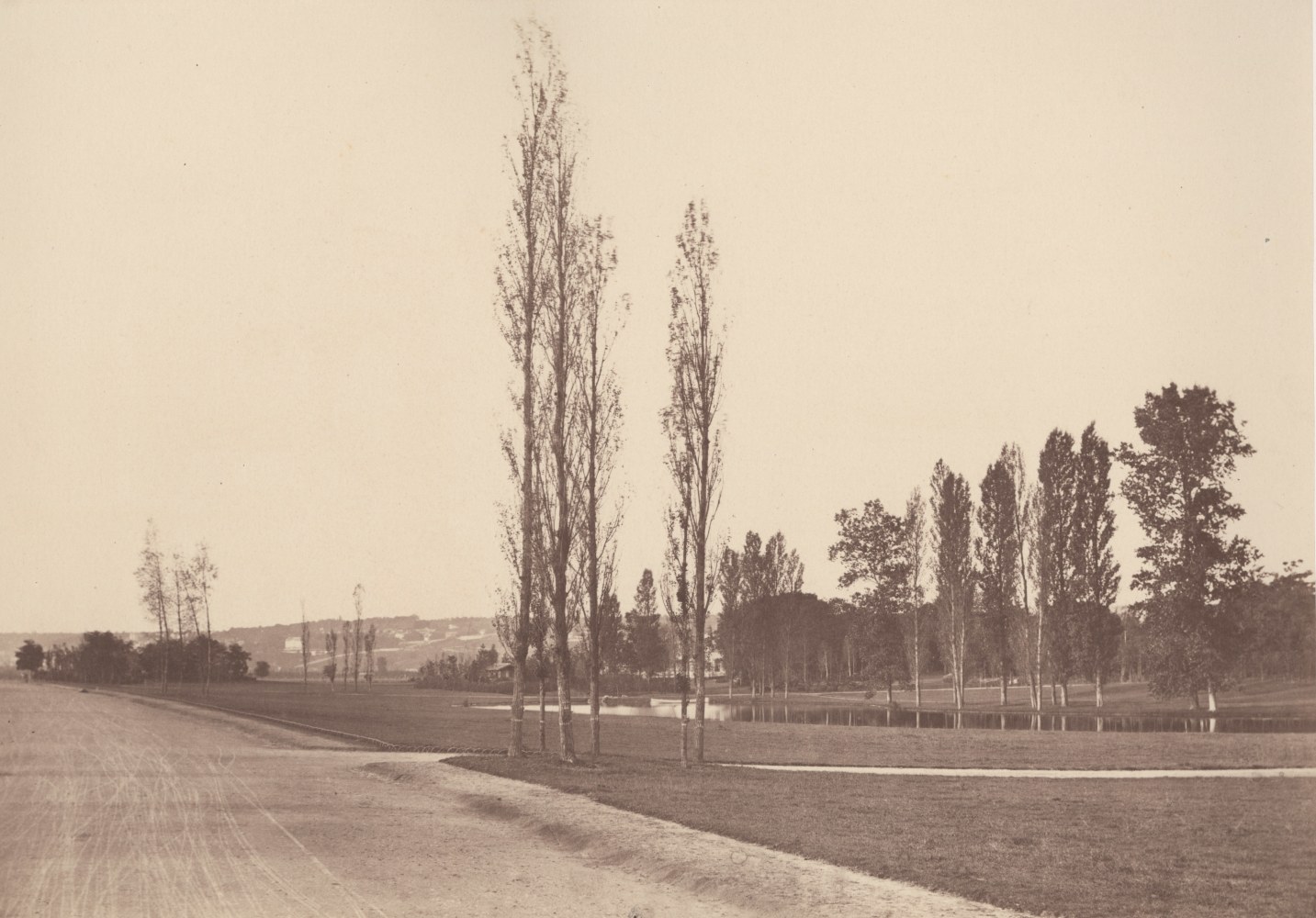
Charles Marville (French, 1813-1879)
Paysage du Bois de Boulogne, 1858
Albumen print from a collodion negative
25.0 x 35.8 cm
Marville began his artistic training as an illustrator and learned to make photographs in 1850. Through his successful career, Marville became known as the official photographer of Paris. He excelled in views of architecture and landscape, including the newly redesigned Bois de Boulogne.
Inquire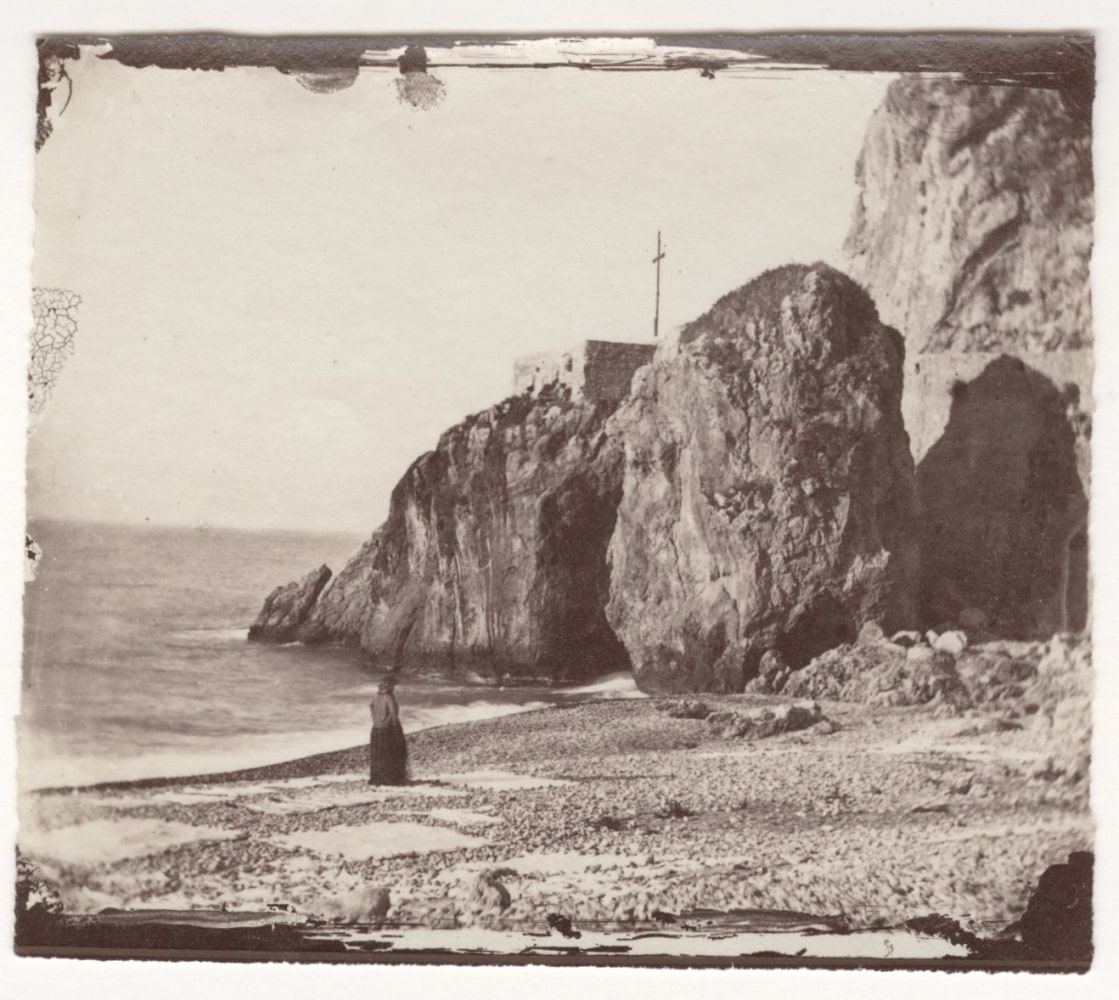
Charles Nègre (French, 1820-1880)
Woman at the seashore, 1860s
Albumen print from a collodion negative. One-half of a stereograph.
9.3 x 10.8 cm
Inquire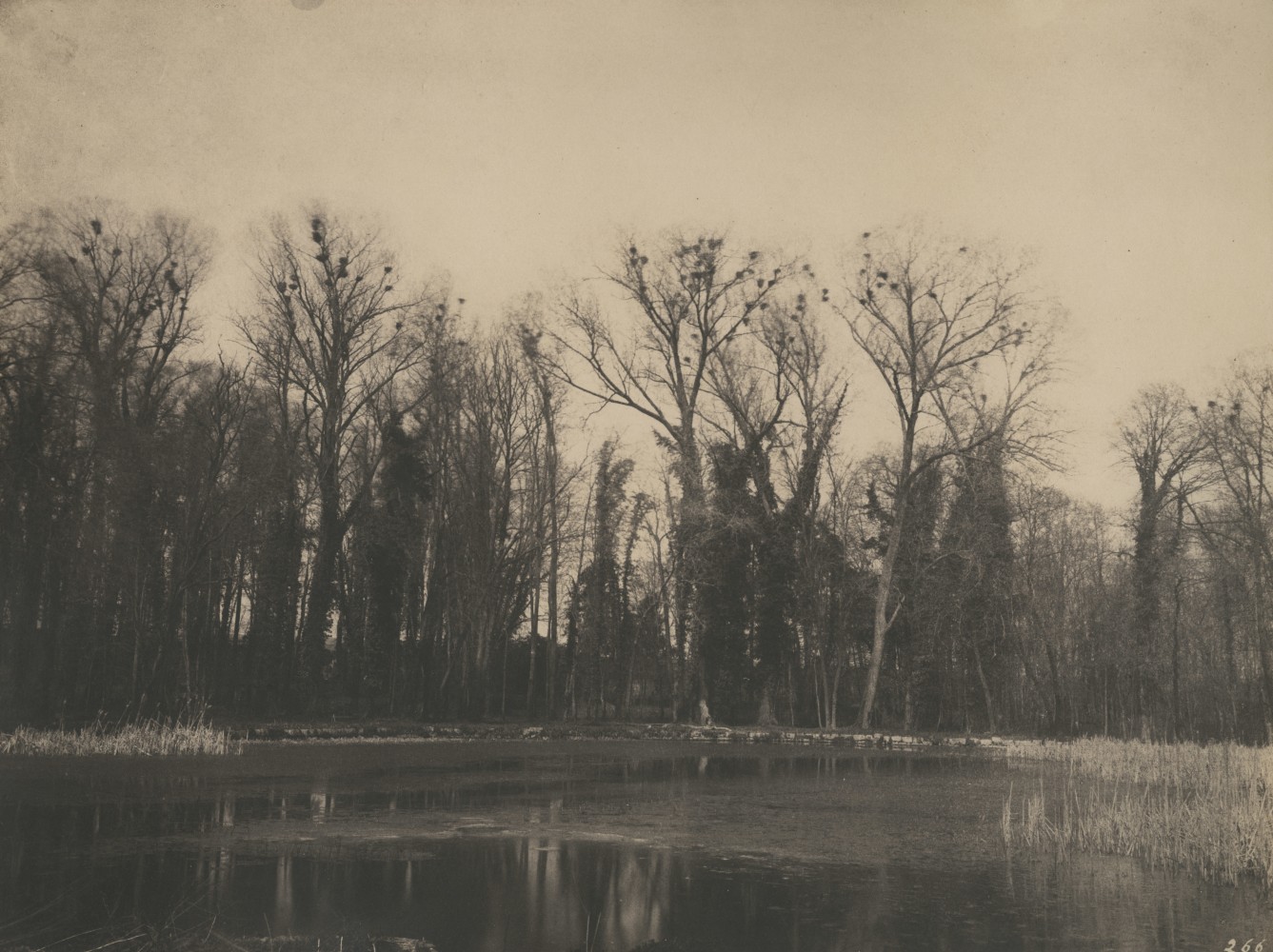
Eugène Cuvelier (French, 1837-1900)
"Parc de Courances, nids de corbeaux," 1860s
Salt print
25.5 x 33.6 cm
Inquire
Gustave Le Gray (French, 1820-1884)
"Le Hêtre, Fontainebleau,"early 1850s
Albumen or coated salt print from a waxed paper negative
20.0 x 27.2 cm
By the late 1840s Le Gray had become an innovator of photographic processes, developing the waxed paper negative around 1848. Saturating the paper with beeswax and light-sensitive chemicals produced an image sharper than that resulting from the paper negative process devised by Talbot in the 1830s. The waxed paper of Le Gray’s process could be prepared in advance and developed days after exposure allowing photographers to minimize the quantity of equipment in the field.
In 1849, Le Gray traveled to Fontainebleau to photograph the forest. By that time, the forest of Fontainebleau had already hosted several important landscape painters, such as Camille Corot and Theodore Rousseau, who produced oil sketches en plein air. Train service from Paris, established in 1849, also brought thousands of metropolitan visitors who strolled through the various regions of the forest which included rugged landscapes of boulders and sand, thick oak forests, and shaded birch groves. Le Gray sought out the most technically challenging subjects for his photographs, concentrating on rocks and trees bathed in rapidly shifting light that was difficult to capture with long exposures. Masterpieces of light and shadow, Le Gray's pictures of Fontainebleau are remarkable technical achievements and are considered some of the most artistic photographs made in the mid-nineteenth century.
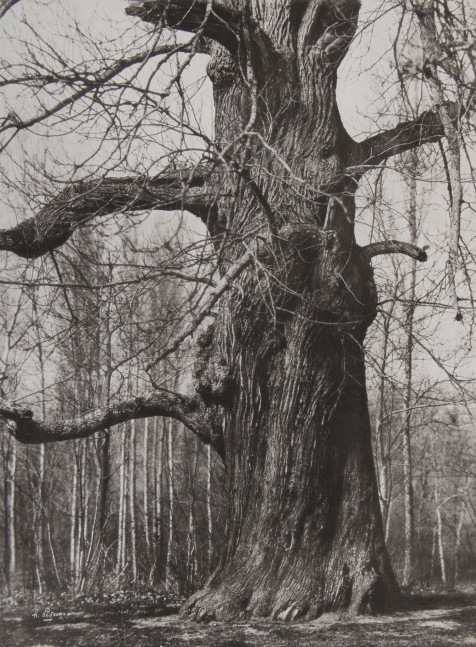
Henri Le Secq (French, 1818-1882)
Le chêne dénudé, 1870s, paper negative, 1850s
Photolithograph
51.2 X 37.8 cm
It is likely that this example was printed using the "encre grasse" method of Thiel Ainé et Cie, a firm that developed a photolithographic technique and collaborated several times with Le Secq, each time using his old paper negatives from the early 1850s. Most known Le Secq photolithographs are of architecture. There are very few of Fontainebleau. This print is one of the only examples to have appeared on the market.

Joseph vicomte Vigier (French, 1821-1894)
"Saint-Sauveur. La Vallée de Luz prise du chemin de Sasis," 1853
Salt print from a paper negative
26.0 x 36.7 cm
Vicomte Vigier was one of Le Gray's most successful pupils. His comfortable mastery of Talbot's calotype as well as Le Gray's wax paper negative process gave him great flexibility. Using these two techniques and an exceptionally large camera, Vigier led armchair travelers on an 1853 summer journey through the Pyrenees. Most of his views, such as this one, rely on a deceptively straightforward depiction to create a magnificent view.

Unidentified photographer attributed to the Circle of Charles Simart
Detail of an espaliered apple tree (left), from the album assembled circa 1856-1860
Salt print from an enlarged collodion negative
28.4 x 43.4 cm

W. H. GUEBHARD (American, active 19th century)
Alley of trees, probably in Pau, 1854
Salt print from a paper negative
34.9 x 25.0 cm

Charles Marville (French, 1813-1879)
Paysage du Bois de Boulogne, 1858
Albumen print from a collodion negative
25.0 x 35.8 cm
Marville began his artistic training as an illustrator and learned to make photographs in 1850. Through his successful career, Marville became known as the official photographer of Paris. He excelled in views of architecture and landscape, including the newly redesigned Bois de Boulogne.

Charles Nègre (French, 1820-1880)
Woman at the seashore, 1860s
Albumen print from a collodion negative. One-half of a stereograph.
9.3 x 10.8 cm

Eugène Cuvelier (French, 1837-1900)
"Parc de Courances, nids de corbeaux," 1860s
Salt print
25.5 x 33.6 cm
